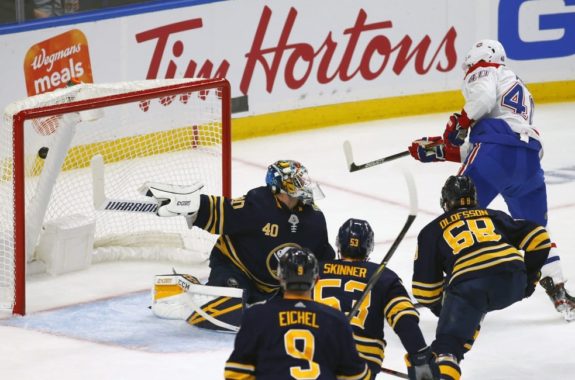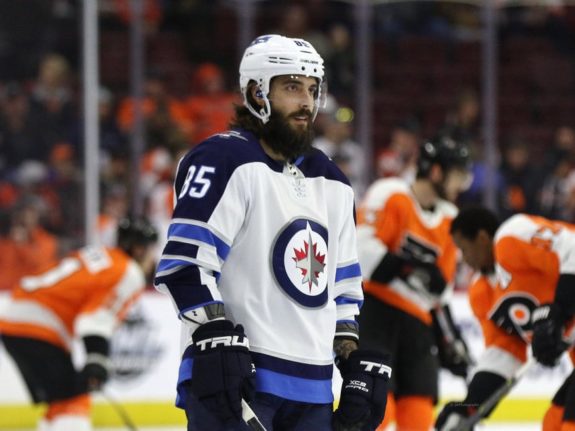The Montreal Canadiens’ training camp has officially begun, and with it, the predictions and projections that help build excitement heading into the regular season. I want to take a deep dive into the Canadiens’ possible power-play formations early in 2021-22, and I’ll try to explain why these formations will work. But first, a quick look at the power play in the last couple of seasons.
Related: Montreal Canadiens Season Preview Articles
The Canadiens’ power play has struggled. In 2019-20, they finished at 17.7 percent efficiency, about two and a half percent below the league average of 20.03. Last season, they showed some minor improvement finishing at 19.2 percent efficiency, which was slightly below the league average of 19.8 percent. The team frequently excelled at even strength, but the power play often sapped their momentum and negatively impacted many strong performances.
However, in 2021-22, the Habs will ice a roster that is more capable (on paper) of burning teams on the power play. Head coach Dominique Ducharme and assistant coach Alex Burrows should be able to evenly spread the offensive wealth between two effective units.
Unit One
This is the projection for unit one: Cole Caufield, Tyler Toffoli, Brendan Gallagher, Nick Suzuki and Jeff Petry.
This lineup is very close to the top unit the Canadiens used in the playoffs last season, with the additions of Gallagher and Petry and subtracting Corey Perry and Erik Gustafsson. The team actually had a lower power-play percentage during the playoffs, at 18.3 percent, but most teams dip in the postseason. During the regular season, with Caufield becoming a full-time NHL player, this unit should be able to convert more frequently.
Where do these players lineup? In a 1-3-1 formation. Caufield should be on the left side in the one-timer position. He needs to be allowed to shoot the puck. Toffoli fit well in the bumper position last season, and this should remain the same. He has a good enough shot to score from just outside the hash marks (between the two faceoff circles) and can deflect pucks from out high. Gallagher will be the new net-front presence here. Ideally, he will act as a screen, deflect pucks, dig for rebounds, and act as a down-low goal-line option. Near the goal-line, he should be in a position to feed Toffoli short, quick passes in the slot.
Suzuki is the catalyst of this unit, playing the right side. First, he is a shooting threat from the right faceoff dot. Second, he will have the option of feeding Toffoli in the slot, Gallagher down low, or Petry at the blue line. Petry will man the point and act as a shooting threat and a set-up man for either Caufield or Suzuki. If this unit is working, it should look something like this:
One potential issue with this unit is that every player is a right-handed shot. It may be more desirable to have at least one left-handed shooter on this unit, like Mike Hoffman. However, historically, Hoffman and Suzuki have occupied the same space on the power play. As of now, it seems reasonable to split them up and allow them to play their preferred position.
Unit Two
Unit two will have a different approach because they have fewer shooting threats. Here is the projection for unit two: Jonathan Drouin, Christian Dvorak, Joel Armia, Mike Hoffman, and/or Chris Wideman/Alexander Romanov.
The second power-play unit should run through Drouin on the left-side wall. In the past, Drouin has hesitated to shoot, even though he possesses a solid shot. He needs to establish himself as a shooting threat to make this unit more threatening and less predictable. Hoffman should play the right side in the one-timer position. That is where he has made his living, and there is no reason to change it now. Not many players can shoot the puck like Hoffman, meaning he is the number one shooting option here.
Dvorak’s game is one of versatility. That extends to the power play, where he can play the bumper position or be the net-front presence. The Canadiens should use him first in front of the net. Watch any Dvorak highlight, and he excels in tight spaces near the net. Also, Armia should be in the bumper position on this unit. He has shown that he can succeed in this position. He is a big body, capable of puck protection and retrieval and can push his way to the front of the net for rebounds. He can also release the puck quickly under pressure.

(AP Photo/Jeffrey T. Barnes)
The defence should rotate between Alexander Romanov and Chris Wideman, depending on who is in the lineup. If it’s Wideman, he should earn this opportunity to start the season. He is an offensive defenseman first with a lot of power-play experience.
The glaring issue here is that Hoffman will miss training camp due to a lower-body injury, and this could have a ripple effect on both units. Armia will also be needed on the penalty kill as well. As a result, the coaching staff may want to pursue other options to manage his ice time. Fortunately, the Canadiens have a deep forward bench and can rely on others.
Honorable Mention and Possible Alternatives
New addition Matthieu Perreault has years of power-play experience from his time with the Winnipeg Jets, where he primarily acted as the net-front presence. He has a knack for deflecting pucks and scoring on rebounds. It’s reasonable to expect him to earn some power-play time in Montreal.

(Amy Irvin / The Hockey Writers)
If Ryan Poehling impresses at training camp and lands a full-time roster gig, he might get an opportunity to play on the man advantage in some capacity. He has power-play experience at the World Junior Hockey Championship as well as with the Laval Rocket in the AHL.
The Canadiens’ coaching staff may have other ideas for their power-play units, but they have the players to make an impact this season. These are merely suggestions. On paper, this may be the best the Habs have looked offensively in a long time, but in a tough Atlantic Division, the power play could be the difference between the playoffs and the golf course.